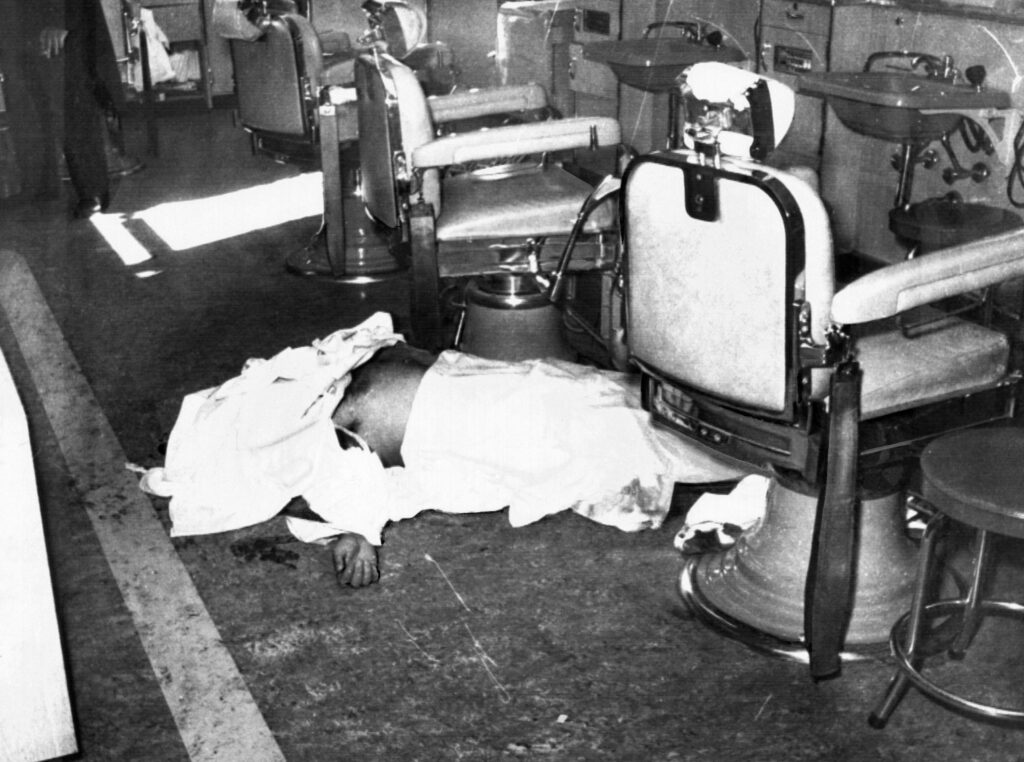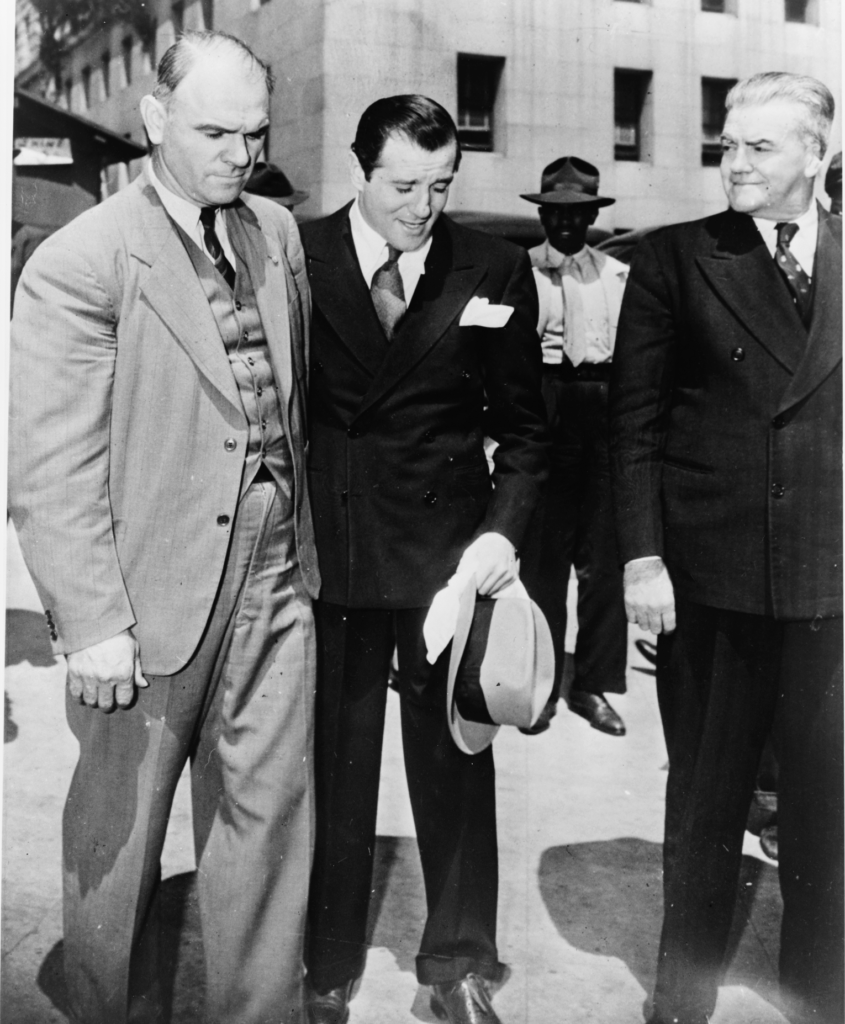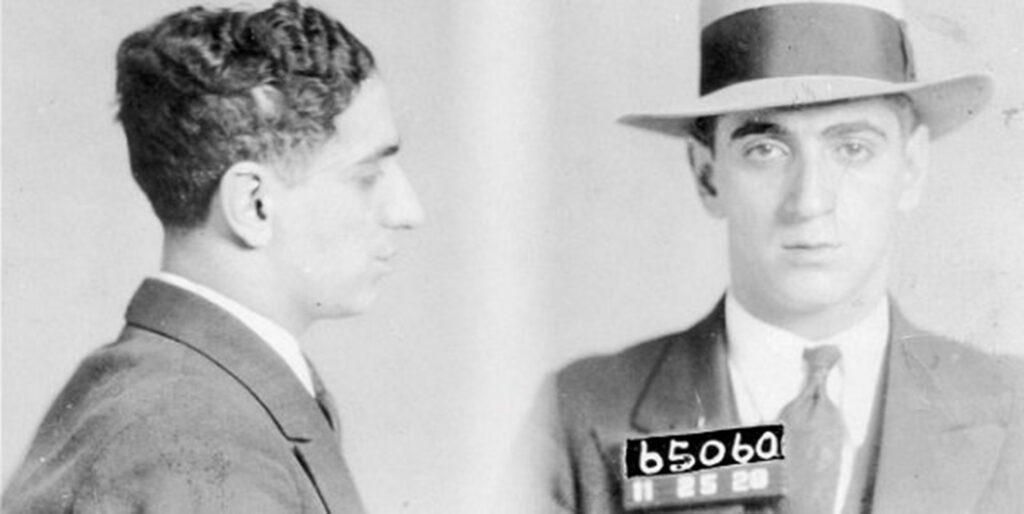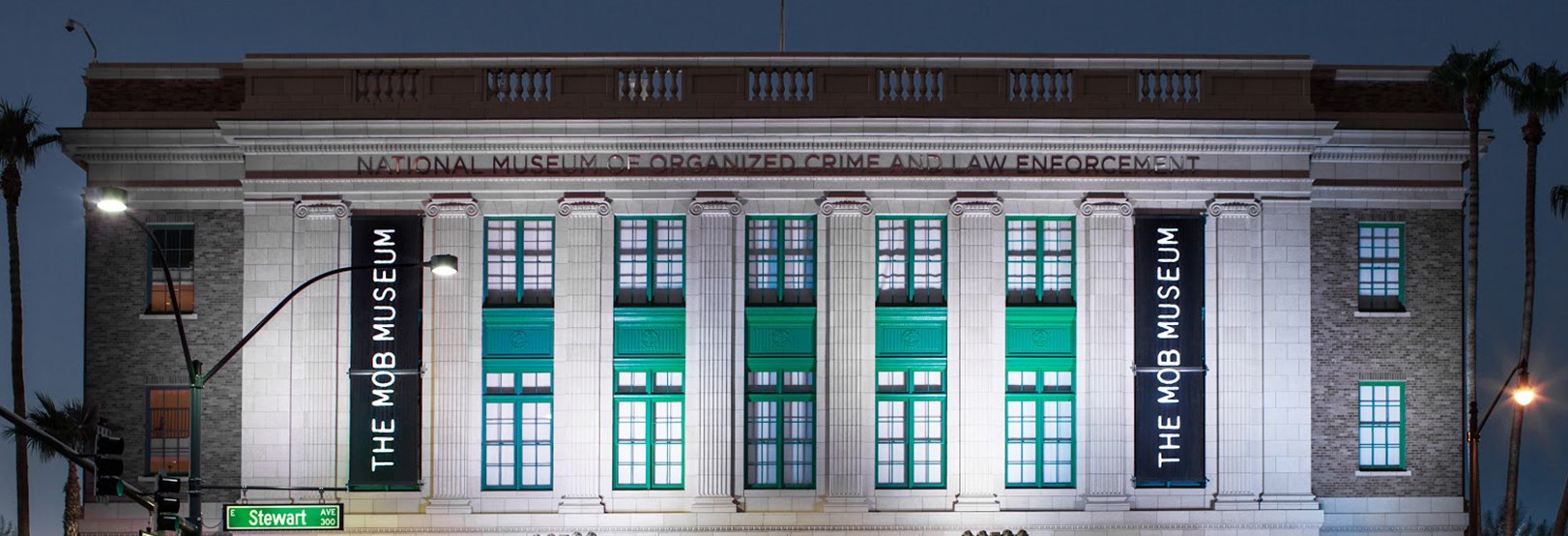‘Leave the gun.’ Did mobsters seriously do that?
The reasons why professional hitmen discard their firearms at crime scenes

One frequently asked question at The Mob Museum revolves around a legendary scene in The Godfather. It’s the one in which Peter Clemenza, after a successful hit on Paulie Gatto, tells Rocco Lampone: “Leave the gun. Take the cannoli.”
Museum guests often want to know: Did hitmen really leave their weapons behind after a murder? No one is surprised that they take the cannoli. But why not take both? Many assume it would be safer to take the gun and ensure the police are not able to link your DNA, fingerprints or firearm license back to the murder weapon.
Historically, many hitmen did intentionally leave firearms at or near the scene of a crime. Guns left behind were usually hard to trace back to the shooter — either they were registered in someone else’s name, or the serial number had been altered or obliterated. Hitmen knew it was far better to risk the police finding an errant fingerprint or restoring a serial number than it was for the obvious murder weapon to be found in their possession. With the firearm in their possession, especially shortly after a crime was committed, they risked serious incrimination. They also frequently risked additional weapons charges, particularly if they were already registered felons or carrying out a hit away from their state of residence.
With modern forensic techniques, leaving a gun at a crime scene seems shortsighted at best. A guiding rule within forensic science — known as Locard’s Exchange Principle — states that “every contact leaves a trace.” First formulated by pioneering French forensic scientist Dr. Edmond Locard, this principle suggests that everything a person touches will bear evidence of his or her presence. Forensic science is based on these trace contacts: latent fingerprints, misplaced soil, drops of blood or gunshot residue. Popular forensics television shows have introduced many of these techniques to the public, but they oversimplify the work and detail needed to process this evidence. And people often forget how recently some of these fields of forensics were developed.
The Godfather, which debuted in 1972, was created before DNA profiling was possible. The movie also is set in the 1940s. And although other fields of forensic science such as serial number restoration and fingerprinting were well established by then, Mob hitmen often possessed the know-how to ensure that a discarded firearm could not be traced back to them.
Many mobsters used straw buyers to obtain guns, a common tactic in use to this day. Straw purchasing is when a person buys a gun on behalf of someone else. The straw buyer legally obtains a gun and sells or gives the gun to its intended owner. Other common ways for mobsters to obtain firearms used in hits were by stealing them or illegally purchasing them through unlicensed dealers or larger trafficking operations.
These guns, which are more challenging to trace back to their owner than a licensed firearm, are ideal candidates for crime scene abandonment. When Albert Anastasia was killed in a barber chair at the Park Sheraton Hotel in Manhattan 1957, his assassins tossed their guns. Police found a cast-off .38-caliber Colt Police Positive in the corridor outside the barbershop. Later that afternoon, they retrieved a .32-caliber Smith & Wesson from the bottom of a waste baler in the 57th Street BMT subway station. The police accurately predicted that one of the shooters might discard his gun while fleeing by train.

In the October 27, 1957, issue of the Elmira (New York) Star-Gazette, an article outlines exactly the mentality that led to discarded guns:
“The police were trying to check the history of the two guns tossed aside by the slayers but they said they did not believe the guns would be of much help in tracing the killers.
“The slayers apparently believed the same thing — that the guns had passed through too many hands to be traced to them and that it was safer to leave the weapons behind than possibly to be picked up in possession of them.”
Firearm examination could match the guns to the crime, but detectives had no further luck in their investigation. The .32-caliber Smith & Wesson was shipped to an out-of-town dealer in 1920, and the trail turned cold. The .38-caliber Colt was traced back to Chicago, where it had been sold in August 1934, but police were never able to figure out to whom. This particular detail led some newspapers to report that the killer may have been imported from Chicago.
Anastasia’s murder stemmed from a dispute over leadership between the Genovese and Anastasia crime families. Anastasia’s death created an opening for Carlo Gambino, for whom the crime family was later named. Possible suspects were plentiful. As explored in Selwyn Raab’s Five Families, police suspicions first focused on Santo Trafficante Jr., a Tampa Mafia boss registered at the time as a guest of the Park Sheraton under the name B. Hill. Detectives later concluded the Gambino and Genovese families, in a desire to distance themselves from the crime, hired a crew from Joe Profaci’s family led by up-and-comer “Crazy Joe” Gallo. Gallo and Carmine Persico have been credited with the hit, although it remains unsolved, due in part to lack of evidence. It might have been possible to build a case against the killers had they kept their guns. Instead, abandoned in an alleyway and a subway tunnel, the firearms proved untraceable.
Decades earlier, in a different barbershop, the story was the same. Loanshark Martin Krompier, aide to Dutch Schultz, was shot at the Hollywood Barber Shop in Midtown Manhattan just after midnight on October 24, 1935. Less than two hours before, Schultz and three associates were shot at the Palace Chop House restaurant in Newark, New Jersey.
Eyewitnesses said that one man entered the barbershop while three others stood watch on the outside stairs. The gunman fired at Krompier and his companion Samuel Gold, who were not expected to survive the assault. According to New York Times coverage, police found a .38-caliber revolver near the door of the barbershop. The attack on Krompier attack was never prosecuted.
It may be simple to chalk this up to law enforcement’s lack of concern for the life of known mobsters, or even more practically, the simplistic forensic techniques available to them at the time. Neither of these claims would be entirely accurate. After the Schultz and Krompier shootings, which were just two in a string of violent Mob clashes in the fall of 1935, New York Police ordered a roundup of known gunmen.

When this failed to produce any leads, Mayor Fiorella La Guardia ordered New York City Police Commissioner Lewis J. Valentine to break up the connections among racketeers with violence and force. In a New York Times article from October 30, 1935, Commissioner Valentine was quoted telling city law enforcement leaders:
“We want these men for questioning in these and other murders, and in connection with law violations of various kinds . . . every detective in the city knows tonight that he is not only expected to bring in any of these men he can find, but also to ‘muss them up.’”
Valentine also pressed New York ballistics experts to take mobsters to task. He announced that they were analyzing bullets from recent gang war victims. Preliminary analysis determined five recent victims had been shot with bullets fired from the same gun. Although this crackdown did ultimately lead to some criminal convictions, it did not yield evidence related to the attempted hit on Krompier.
In the end, after five blood transfusions, Krompier pulled through, but he was either unwilling or unable to provide additional information that could have linked the gun to the gunman. It was another unsolved crime regardless of the physical evidence at the scene.
On November 22, 1939, in Hollywood, California, Harry Greenberg was shot to death while still seated in his car outside his home by two gunmen who escaped by car. Greenberg was a New York mobster associated with Benjamin “Bugsy” Siegel and Louis “Lepke” Buchalter who had been deported to Poland in 1935. He reentered the country and settled in Los Angeles.
Police discovered the killers’ getaway car on November 24 just six blocks from Greenberg’s home. Inside the black Ford sedan, they found a .45-caliber automatic pistol and .38-caliber revolver with five exploded shells. The serial numbers of the guns had been filed off. The guns and even the inside of the car had been wiped clean, so police were not able to find fingerprints. The vehicle, which was missing license plates, had been stolen only a few hours before the murder. Police were able to take casts of footprints discovered near the car, but they found no other clues.

In an interesting twist, police believed Greenberg may have served as an armorer for Murder Inc., providing untraceable firearms for hits across the country. In 1940, Siegel and Frankie Carbo were arrested for the murder. During the 1942 trial, New York hitman and prolific rat Allie “Tick Tock” Tannenbaum traveled to Los Angeles and testified that he had supplied the guns used by Siegel and Carbo in the hit. He also explained the reason behind Greenberg’s fate: He had allegedly threatened to become an informant.
Both Siegel and Carbo provided alibis. Siegel’s case was dismissed, and Carbo’s fate was left up to a jury that ended with a 10-to-2 deadlock for conviction. A second trial was set for March 30, but the Supreme Court of the State of New York refused a request to transfer Tannenbaum back for a second trial, and the case fizzled. The court dismissed Carbo’s case on March 24. Once again, abandoned weapons failed to yield sufficient evidence.
Criminals continue to abandon guns at crime scenes into the present. Although forensic science techniques are more advanced, hitmen have found ways to stay a step ahead of law enforcement. Some of the firearms left behind today are self-manufactured unserialized firearms (SMUFs), often called “ghost guns.” These firearms are assembled from kits, which are not classified as weapons. As Ioan Grillo explains in Blood Gun Money, people began selling SMUF-style gun kits in the United States in the 1980s, although the idea of privately assembled guns dates back centuries. The kits are not classified as weapons, so dealers do not need to be licensed, and the guns do not need serial numbers. Once assembled, they do become firearms, and standard licensing requirements apply, but it is easy for criminals to possess these guns without any paper trail.
In Blood Gun Money, Ginger Colburn, spokesperson for the Southern California ATF, states that about 30 percent of firearms seized in the region are SMUFs. Of those 30 percent, many are linked to drug cartels and affiliated gang activity, seized through search warrants as well as at crime scenes. Although firearm licensing and centralized police databases are meant to make it more challenging to commit violent crimes, would-be hitmen continue to find ways to obscure their connection to specific guns.
Ultimately, discarding murder weapons does pose a greater risk today, as DNA analysis, serial number restoration and many other forensic techniques have become more advanced with each passing year. But leaving a gun at a crime scene has always been a calculated risk meant to avoid a criminal being detained or arrested with the murder weapon in his possession. There are legitimate reasons why hitmen may opt to leave their gun at a crime scene, but of course, no one is going to pass up a free cannoli.
Feedback or questions? Email blog@themobmuseum.org





